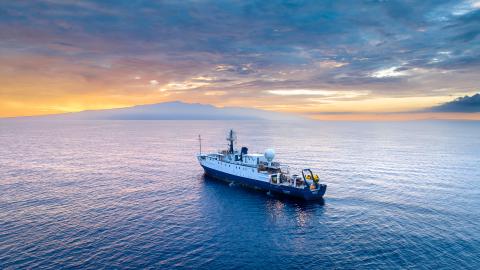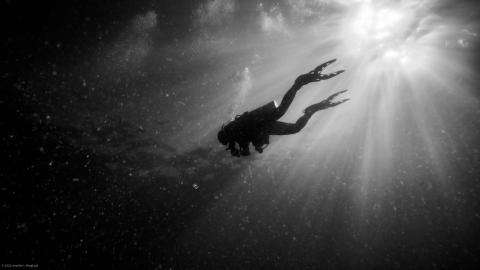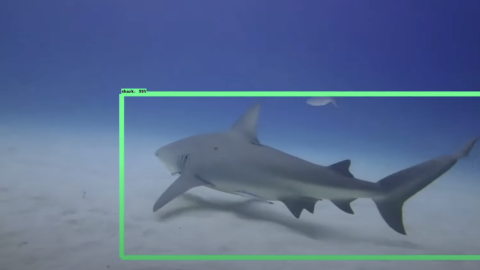A Day In the Life: Carissa's Marine Mammal Research Field Log
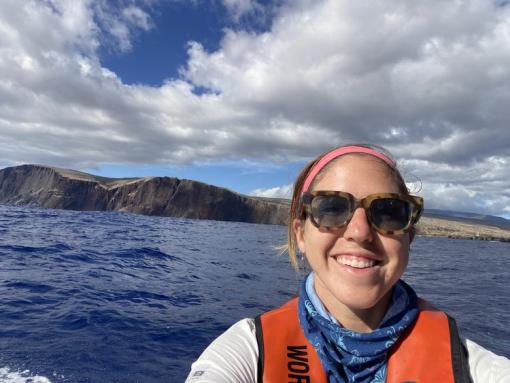
This living blog is the journal of National Geographic Society Marine Mammal Team Storyteller Carissa Cabrera.
I’m writing you this field log aboard the Nautilus, a research vessel run by Ocean Exploration Trust. OET and National Geographic have teamed up to host a series of expeditions to better understand our connected ocean, and launch a new form of research cruises that is integrative, collaborative and serves local communities. From Shore to the Abyss as a program will take place throughout Fall 2022 in Hawai’i, and I’m joining the first expedition that has a focus on marine mammals and sharks - sentinel megafauna that hold both cultural and ecological significance in the Main Hawaiian Islands. As the educator and storyteller of the marine mammal team, sharing our discoveries, experience, and providing resources to connect with our work is a key part of my role. This field log will be updated to give you a behind-the-scenes look into what participating in a research expedition is like!
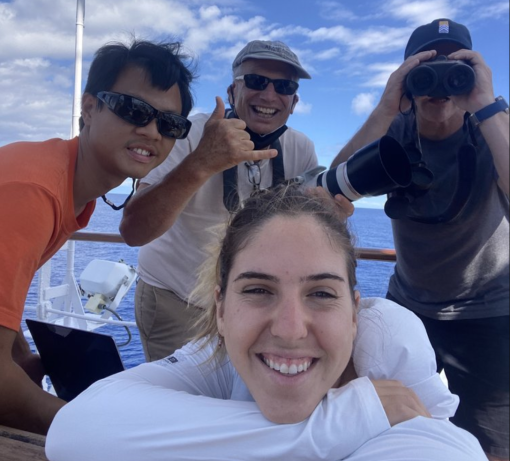
Day 1: Transit
On September 16 we departed port in Honolulu to head toward Maui waters. Our transit day included briefings on each project to the guests and crew, and an opportunity for us all to get to know one another more. The expedition has brought explorers, educators, storytellers, and citizen scientists together from across the world to lead innovative science in Hawai’i, with a few of us working in conservation and community education here locally. The sharks team is deploying underwater BRUVs at key depths to collect recordings on shark species in the area. Sharks (manō) hold immense value to Hawaiian culture and serve as indicators of healthy ecosystems. They hope to learn more about species composition at certain sites and are sharing the process with local schools across the archipelago. Learn more about the mālama manō project.
The marine mammal team that I’m a part of is using new technology to better understand the vocalizations of dolphins and whales, with the ability to pinpoint the sound sources for the first time. With over 20 marine mammal species in Hawaiian waters, we have a unique opportunity to gather recordings and make strides in our understanding of interspecies communication. (This research is done under NOAA Permit 19655.)
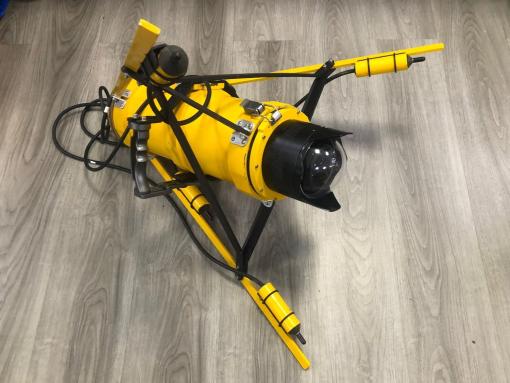
Day 2: Diving In!!
Having arrived off the coast of west Maui in the evening, we woke up on our first research day at 5:00 am with cups full of coffee. Extended Horizons, our dive partner company, picked us up to do a safety checkout dive and deploy the first set of shark BRUVs off the coast of Lanai. I accompanied the sharks team to learn more about their process, capture video of the deployment, and experience the beautiful coral reefs at our dive site. After returning for lunch, I jumped on the zodiac with my team to begin our marine mammal surveys. While we didn’t find any individuals on our first day out (aside from some beautiful seabirds) we weree able to confirm our bottom-mounted array is gathering passive acoustics over a 24-hour period!
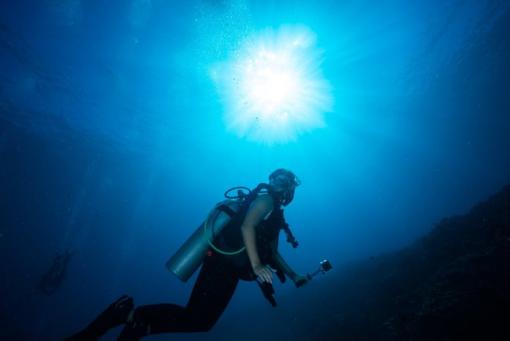
Day 3: Spinner Success!
The morning of the third day part of my team went off the coast to begin marine mammal surveys. They encountered a pod of nearly 60 spinner dolphins (na'i’a) and were able to successfully collect in-water recordings. It was a tremendous first success of the handheld data collection methods we are piloting during this expedition! In the afternoon, we departed to collect the bottom-mounted arrays for assessment and data transfer. I was able to capture the entire process from the water, including the team effort to retrieve a 50+ pound device carefully before heading back to the Nautilus. In the evening, we enjoyed a talk from Erin Spencer, a marine ecologist studying great hammerheads on the technology used to better understand sharks in the field.
Day 4: Educating the Masses
We woke up to wind gusts that we thought may change our plan for the day, but they settled after breakfast. Our team took out citizen scientists in search for marine mammal, using the field guide we developed for them. You can access that field guide here. I stayed back to conduct a Ship to Shore connection to over 900+ student from Supercharged Science, a platform that connects home school and informal learning groups to engaging experiences. If you’re an educator looking to connect your students to exploration and research, you can sign up for a Ship to Shore live interaction session. I was able to get feedback from collaborators on my lesson plans, appropriately called Cetacean Connections, and iterate on ways to engage students in different ways on behavioral research from the natural world. Overall, a beautiful day to be an explorer.
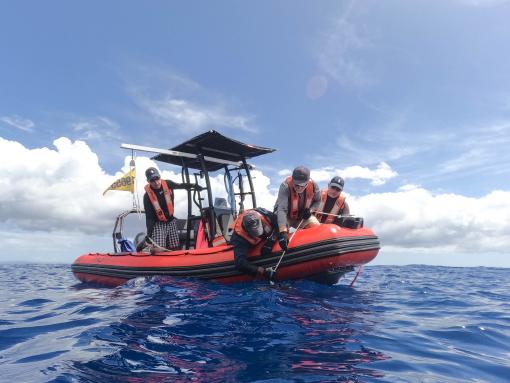
Day 5: Last Day in Maui
On our last full day off the coast of Maui, a handful of team members, National Geographic staff, and citizen scientists enjoyed a kayak around the reef while the rest of us took advantage of computer time. I had the opportunity to interview a team member, colleague, and now dear friend, Dr. Adam Pack from the University of Hawai’i at Hilo on his role in our team. The lesson plans I’m developing as part of this expedition allow students to practice Explorer principles through recording their own observations and asking research questions about behavior. As a lifelong explorer dedicated to better understanding cetaceans and their behavior, Adam was a great person to include in the lessons. The afternoon included a marine mammal survey that was unsuccessful, but still a joy to be on the water nonetheless. While the sharks team was conducting their own research, a whale shark approached their boat curiously! It was definitely a once in a lifetime moment. Our collective teams spent the evening saying goodbye to those leaving us tomorrow, and enjoyed a pau hana to celebrate the lifelong relationships made in such a short time.
Day 6: A hui hou team, hello bottlenose dolphins!
We woke up in the morning and said goodbye to those disembarking on Maui for this leg of the expedition(s). In the morning, I was able to review footage from the past few days, share data, and get a clear vision of the film we are collaboratively creating. In another Ship to Shore connection, I joined the Nautilus science communication team to talk with a group of students tuning in from Texas State Aquarium. It never ceases to amaze me how curious students are about the deep sea and exploration. After, we boarded the zodiac for our last marine mammal survey on Maui with high hopes. After an hour of surveying in calmer waters, we came across a group of bottlenose dolphins (Tursiops truncatus), including a young calf! We were successfully able to collect photo-ID images and get one of our smaller arrays in the water to record vocalizations. The group didn’t stay with us for long. Even though we are studying these individuals under federal permit, it’s still so important to reduce disturbance as much as possible. When the group left for deeper waters, we took as a sign to survey elsewhere
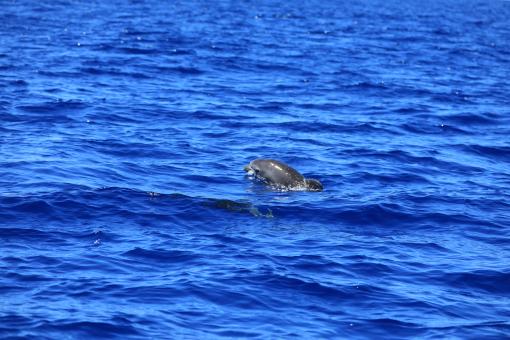
Day 7: Students' Backyard
We arrived early in the morning off the west coast of Hawai’i Island, in Moku o Keawe. I stayed behind to connect with over 600 students across the country with the OET crew. During planning, it was important to all of us that our expedition reached students in Hawai’i so they could learn about the science we’re investigating in their own backyards. The Conservationist Collective was a recipient of National Geographic Educator Grant in 2020, where we developed and distributed ocean climate curriculum to middle school students throughout Hawai’i. I was able to connect with some of those same classrooms this morning and speak with 450+ students from Aeia Intermediate School! Cetacean Connections, the curriculum associated with this expedition, will also be distributed in local schools. The second half of the day included successful marine mammal surveys, since spinner dolphins (Stenella longirostris) seem to be abundant on this coastline.
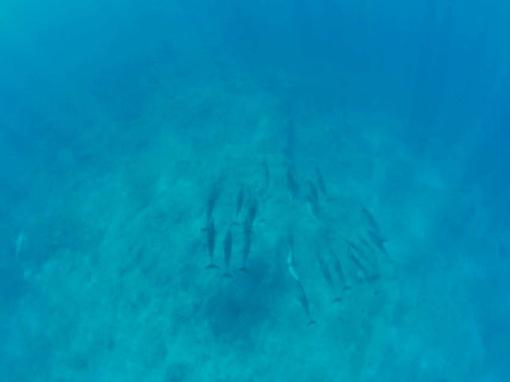
Days 7-10: Productive Time at Sea
The days on Hawai’i Island have been extremely productive - both teams are in the groove of their daily activities and we’re reaching critical mass on our education events. In partnership with OET, I co-hosted a From Shore To The Abyss Project Panel on our research progress featuring our entire marine mammal team! The event reached thousands of viewers tuning in from different different states, countries, and platforms. It was a tremendous success!
The rest of our time has been focused on gathering as much recordings as possible using both our remote arrays and handheld ones. We deployed two of our bottom mounted arrays (see below) off the coastline to record for 48 hours. The arrays are positioned ~300 meters apart, so they can hopefully capture any activity, vocalizations, and acoustics in the area.
The successful deployment of the bottom mounted arrays meant we could prioritize in-water recordings. The groups of spinner dolphins have been predictable in their location, even though the pods seem to be distinct. We even had a pod join us near Nautilus as we were loading the Zodiac one morning! Thanks to a collective effort of our team, OET crew, and documentarists aboard, we’ve been able to collect data, Photo-ID, in-water vocalizations, and underwater video footage in 5+ encounters over the past few days. We hope many more ahead!
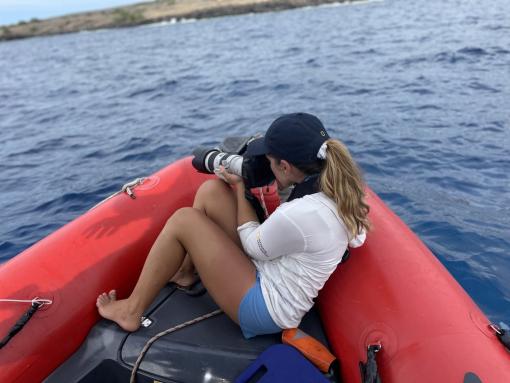
Day 11-12: Consistency is Key
Our days off Hawai’i Island have been full of spinner dolphins and surveys. As we approach the end of our expedition, our team is eager to gather as much data as possible before we disembark. Luckily, the predictability of the spinner dolphin groups have enabled us gather sometimes multiple recordings a day, countless images of dorsal fins, and allowed us to cover a wider distance.
In the evenings, we heard from NGS Leadership on the Education framework and next steps of Nat Geo. I had the opportunity the give a presentation on the importance of science communication and how to use modern tools, like social media and podcasts, to widen your reach. It was a privilege being able to share ways to innovate how we inspire the next generation, as well as highlight some work we do at The Conservationist Collective, including our podcast, Sustainability & The Sea.
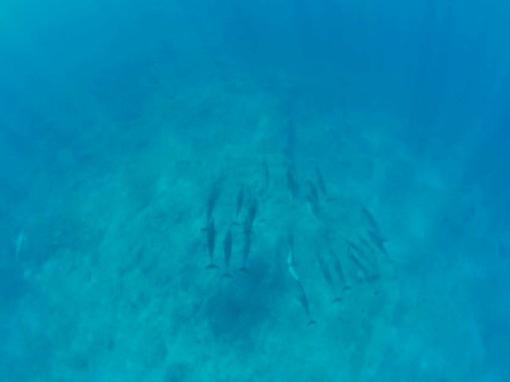
Day 13: Home Stretch
Our final day was as busy as ever. We kicked off the morning connecting with students across North America through Explorer Classroom. We reached over 500 students (!!) and the session is permanently hosted on the Explorer Classroom Youtube to continue to reach other students. Matthias and Abel gathered our final bottom-mounted arrays, which had been recording passive acoustics underwater for the past 24 hours. We departed for Maui, to begin our long journey back to port in Honolulu. Along the journey, we will be giving our final presentations to the group, just in time to catch sunset along the incredible north coast of Moloka’i.
Looking back on the past 13 days, our teams have accomplished so much together. For the marine mammal team, we conducted 12 surveys across 3 islands throughout the last 13 days. Of those surveys, we found cetaceans during 9 of them - an incredible sighting rate! For our bottom-mounted arrays, we deployed them at 5 different locations throughout the expedition, which recorded over 100 hours of passive acoustics. We sighted dolphins near the arrays multiple times, and are hopeful they picked up vocalizations. As far as our handheld arrays, the trusty bumblebee and aspot, we were able to get in-water recordings of two species of cetaceans: spinner and bottlenose dolphins. We encountered multiple groups of spinner dolphins on Hawai’i Island, and one on Lanai. Based on our data sheets, we estimate to have encountered over 200 animals throughout the expedition. I may be biased, but I’m most excited about our educational reach. Through our Ship to Shore Connections, live event, and Explorer Classroom, we’ve shared the marine mammal work of this expedition to over 3,000 students, with over 450 from Hawai’i. Going forward, the lesson plans developed this Fall will be distributed to local schools first, so students in Hawai’i can connect with exploration in their own part of the world.
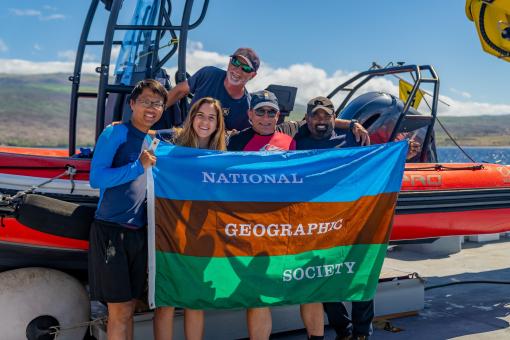
When I think back on expeditions, the most memorable parts are never captured in the data. They will be the conversations happening during late nights in the data lab, the sunsets we race to watch from the fly deck, the book recommendations shared, or in between moments when we are looking at the horizon in hope of dorsal fins. I’m especially grateful for the relationships built aboard Nautilus, and how they’ve inspired and shaped me through their own work in different ways. The countless hours poured over this expedition by every person aboard, and many not aboard, have come together to create something truly magical. This is the first time National Geographic has led an expedition in this specific way, and we have all learned an incredible amount in the journey on a personal and professional level. As we were watching moonrise on our last night, preparing to return back to our lives after a deeply transformational experience, someone summarized the feeling perfectly: “Experiences like this change a person forever.”
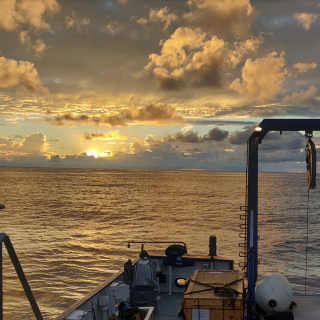
From Shore to the Abyss: Exploration of Marine Mammal Communication and Shark Communities in the Main Hawaiian Islands
In our first leg of the brand-new expedition series From Shore to the Abyss, we are teaming up with (and receiving funding from) the National Geographic Society to study shallow waters near Maui and Hawaiʻi island. Project teams on this leg will combine cutting-edge technologies with indigenous Hawaiian knowledge to increase knowledge and understanding of marine life. The work will focus on sharks and marine mammals—apex predators who are culturally significant to the Hawaiian people.
